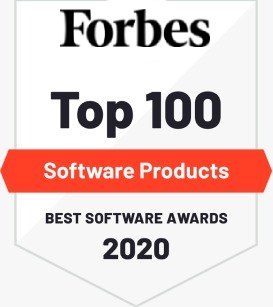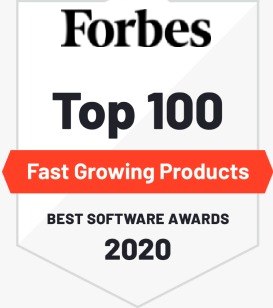Section 1 : Introduction
|
|
Lecture 1 | Introduction | 00:02:17 Duration |
|
|
Lecture 2 | Course Structure | 00:14:04 Duration |
|
|
Lecture 3 | The software Development Process - definitions | 00:03:11 Duration |
|
|
Lecture 4 | The software Development Process - overview | 00:01:27 Duration |
|
|
Lecture 5 | Design Pattern - definition | 00:03:02 Duration |
|
|
Lecture 6 | The scenario in a software project | 00:04:39 Duration |
|
|
Lecture 7 | Roles & Responsibilities | 00:08:22 Duration |
|
|
Lecture 8 | The problem- understand the customer requirement | 00:06:44 Duration |
|
|
Lecture 9 | Presentation of a case study | 00:10:30 Duration |
Section 2 : Software development models
Section 3 : Phase 1 - Requirement Gathering
Section 4 : Phase 2 - DESIGN - The Unified Modeling Language (UML)
|
|
Lecture 1 | Introduction, UML DiagramTypes | |
|
|
Lecture 2 | Class Diagrams | 00:05:16 Duration |
|
|
Lecture 3 | Relationships between classes | 00:05:02 Duration |
|
|
Lecture 4 | UML Relationships | 00:04:11 Duration |
|
|
Lecture 5 | UML Packages | 00:01:25 Duration |
|
|
Lecture 6 | UML Composite Structures | 00:01:57 Duration |
|
|
Lecture 7 | Component diagrams | 00:01:57 Duration |
|
|
Lecture 8 | Use case diagrams | 00:00:40 Duration |
|
|
Lecture 9 | Use cases | 00:01:42 Duration |
|
|
Lecture 10 | How to draw a use case | 00:01:10 Duration |
|
|
Lecture 11 | Use case modelling | 00:02:49 Duration |
|
|
Lecture 12 | Use case document | 00:03:44 Duration |
|
|
Lecture 13 | Interaction & Collaboration Diagrams | 00:05:07 Duration |
|
|
Lecture 14 | Statechart Diagrams | 00:06:38 Duration |
|
|
Lecture 15 | Activity Diagrams | 00:03:33 Duration |
Section 5 : Phase 2 - DESIGN - Software Architecture and design definiti
Section 6 : Phase 2 - DESIGN - Database Architecture
|
|
Lecture 1 | What is a database | 00:12:31 Duration |
|
|
Lecture 2 | Relational database | 00:11:01 Duration |
|
|
Lecture 3 | Define a database | 00:05:37 Duration |
|
|
Lecture 4 | Primary key | 00:06:56 Duration |
|
|
Lecture 5 | Foreign key | 00:14:06 Duration |
|
|
Lecture 6 | Roles and privileges | 00:14:13 Duration |
|
|
Lecture 7 | Case Study - Database structure (1) | 00:04:11 Duration |
|
|
Lecture 8 | Case Study - Database structure (2) | 00:03:29 Duration |
|
|
Lecture 9 | Case Study - Database structure (3) | 00:01:58 Duration |
|
|
Lecture 10 | Case Study - Database structure (4) | 00:04:52 Duration |
|
|
Lecture 11 | Case Study - Database structure (5) | 00:04:13 Duration |
|
|
Lecture 12 | Case Study - Database structure (6) | 00:03:04 Duration |
|
|
Lecture 13 | Case Study - Database structure (7) | 00:03:47 Duration |
|
|
Lecture 14 | Case Study - Database structure (8) | 00:07:45 Duration |
Section 7 : Phase 2 - DESIGN - Technical Requirements
Section 8 : Phase 3 -Implementation-- Development
|
|
Lecture 1 | Introduction | 00:06:06 Duration |
|
|
Lecture 2 | Installations | 00:02:56 Duration |
|
|
Lecture 3 | Configurations | 00:02:41 Duration |
|
|
Lecture 4 | Customizations | 00:06:43 Duration |
|
|
Lecture 5 | Integrations | 00:04:05 Duration |
|
|
Lecture 6 | User Training | 00:05:04 Duration |
|
|
Lecture 7 | Structured Programming | 00:02:23 Duration |
|
|
Lecture 8 | Functional Programming | 00:02:31 Duration |
|
|
Lecture 9 | Programming style | 00:02:09 Duration |
|
|
Lecture 10 | Examples of programming style guidelines | 00:06:18 Duration |
|
|
Lecture 11 | Code re-use | 00:02:09 Duration |
|
|
Lecture 12 | Multi-site Distributed Software Development | 00:01:55 Duration |
|
|
Lecture 13 | Development environments and IT infrastructures | 00:04:34 Duration |
Section 9 : Phase 3 - Implementation - Version Management
|
|
Lecture 1 | What is Version Control | 00:04:02 Duration |
|
|
Lecture 2 | Git and GitHub | 00:03:41 Duration |
|
|
Lecture 3 | Git branching | 00:05:35 Duration |
|
|
Lecture 4 | Create a Git branch | 00:01:45 Duration |
|
|
Lecture 5 | Delete a Git branch | 00:01:24 Duration |
|
|
Lecture 6 | Application of Git branching in a specific develop | 00:03:50 Duration |
|
|
Lecture 7 | Git Terms- Repository,Staging, Commit, Push, Pull | 00:03:00 Duration |
|
|
Lecture 8 | Git in action | 00:09:51 Duration |
|
|
Lecture 9 | Software versioning | 00:04:38 Duration |
Section 10 : Phase 3 - Implementation - Risk assessment
|
|
Lecture 1 | Introduction | 00:05:00 Duration |
|
|
Lecture 2 | Software Risk Identification | 00:01:35 Duration |
|
|
Lecture 3 | Software Risk Analysis | 00:01:45 Duration |
|
|
Lecture 4 | Software Risk Planning | 00:03:00 Duration |
|
|
Lecture 5 | Software Risk Monitoring | 00:00:28 Duration |
Section 11 : Phase 3 - Implementation - Change management
|
|
Lecture 1 | What is Change Management in Software development | 00:04:20 Duration |
|
|
Lecture 2 | The Change Management Process | 00:06:22 Duration |
|
|
Lecture 3 | Agile Change Management Process | 00:02:12 Duration |
Section 12 : Phase 3 - Implementation - The deployment process
|
|
Lecture 1 | The deployment process | 00:02:36 Duration |
|
|
Lecture 2 | The documentation for the deployment | 00:02:36 Duration |
|
|
Lecture 3 | Agile Software Deployment | 00:07:51 Duration |
|
|
Lecture 4 | Regression testing. | 00:08:28 Duration |
Section 13 : Phase 4 - Quality Assurance - Verification
Section 14 : Phase 4 - Quality Assurance - Validation
|
|
Lecture 1 | What is software validation | 00:06:00 Duration |
|
|
Lecture 2 | User Acceptance tests | 00:08:06 Duration |
|
|
Lecture 3 | Organize the user acceptance tests how to run the | 00:02:10 Duration |
|
|
Lecture 4 | Organize the user acceptance tests who is your con | 00:03:43 Duration |
|
|
Lecture 5 | Organize the user acceptance tests the material li | 00:05:29 Duration |
|
|
Lecture 6 | Organize the user acceptance tests the process | 00:02:02 Duration |
|
|
Lecture 7 | Organize the user acceptance teststext execution | 00:01:32 Duration |
|
|
Lecture 8 | Organize the user acceptance tests how to define p | 00:03:49 Duration |
Section 15 : Phase 4 - Quality Assurance - Incident Management, debugging
|
|
Lecture 1 | Incident Management -Definition | 00:03:25 Duration |
|
|
Lecture 2 | The Incident Management Report | 00:03:29 Duration |
|
|
Lecture 3 | The Incident Management Process | 00:03:16 Duration |
|
|
Lecture 4 | The Incident Management System | 00:00:58 Duration |
|
|
Lecture 5 | Case study- Incident Management for the developmen | 00:15:04 Duration |
Section 16 : Phase 5 - Go Live
|
|
Lecture 1 | What is a Software Go Live | 00:00:47 Duration |
|
|
Lecture 2 | The Go Live process | 00:01:03 Duration |
|
|
Lecture 3 | UAT exit procedure | 00:03:28 Duration |
|
|
Lecture 4 | Project sign-off | 00:03:19 Duration |
|
|
Lecture 5 | Preparation | 00:03:18 Duration |
|
|
Lecture 6 | Go Live checklist | 00:01:07 Duration |
|
|
Lecture 7 | Cut over | 00:01:56 Duration |
|
|
Lecture 8 | Go Live | 00:00:51 Duration |
|
|
Lecture 9 | Lesson learned | 00:00:47 Duration |
Section 17 : Software Maintenance
|
|
Lecture 1 | Software Maintenance definition | 00:01:33 Duration |
|
|
Lecture 2 | Maintenance agreements | 00:02:47 Duration |
|
|
Lecture 3 | Software Maintenance Proces | 00:02:25 Duration |
|
|
Lecture 4 | Software Maintenance Methods | 00:03:08 Duration |
Section 18 : Software Platform Development
|
|
Lecture 1 | What is a software platform | 00:02:25 Duration |
|
|
Lecture 2 | Product customizations | 00:06:43 Duration |
|
|
Lecture 3 | Case Study - An eLearning membership website-defin | 00:03:16 Duration |
|
|
Lecture 4 | Case Study - Text in different languages | 00:04:14 Duration |
|
|
Lecture 5 | Case Study - Text in different languages - Explana | 00:06:27 Duration |
|
|
Lecture 6 | Case Study - Assets and config for different count | 00:01:46 Duration |
|
|
Lecture 7 | Case Study - Assets and config for different count | 00:05:06 Duration |
|
|
Lecture 8 | Case Study - Customize functionalities | 00:02:46 Duration |
|
|
Lecture 9 | Case Study - Customize functionalities - Explanati | 00:06:20 Duration |
|
|
Lecture 10 | Case Study - Different modulesadditional pages | 00:01:42 Duration |
|
|
Lecture 11 | Case Study - Different modules-additional pages - | 00:03:13 Duration |
|
|
Lecture 12 | Case Study - Content management to customizeconfig | 00:01:44 Duration |
|
|
Lecture 13 | About Certification | |
|
|
Lecture 14 | Remove - INTRODUCTION TO BRAINMEASURES PROCTOR SYS |
Section 19 : Agile Frameworks SCRUM & Kanban
|
|
Lecture 1 | Agile methodology | 00:05:22 Duration |
|
|
Lecture 2 | Agile Frameworks - Scrum | 00:08:24 Duration |
|
|
Lecture 3 | The Scrum Sprint Cycle | 00:03:44 Duration |
|
|
Lecture 4 | Scrum Release Planning | 00:01:05 Duration |
|
|
Lecture 5 | Sprint Planning | 00:01:20 Duration |
|
|
Lecture 6 | The Daily Scrum | 00:05:46 Duration |
|
|
Lecture 7 | The Sprint Review | 00:04:48 Duration |
|
|
Lecture 8 | The Retrospective Meeting | 00:03:48 Duration |
|
|
Lecture 9 | The Kanban Agile System | 00:03:39 Duration |
|
|
Lecture 10 | Kanban Boards | 00:07:25 Duration |
|
|
Lecture 11 | Team size in a Scrum project | 00:00:57 Duration |
Section 20 : Object-Oriented Programming Concepts
|
|
Lecture 1 | What is Object-Oriented Programming (OOP) | 00:01:58 Duration |
|
|
Lecture 2 | Objects | 00:01:33 Duration |
|
|
Lecture 3 | The Class | 00:04:01 Duration |
|
|
Lecture 4 | Encapsulation and Data Hiding | 00:02:44 Duration |
|
|
Lecture 5 | Abstraction | 00:02:19 Duration |
|
|
Lecture 6 | Inheritance | 00:04:01 Duration |
|
|
Lecture 7 | Polymorphism | 00:03:26 Duration |
|
|
Lecture 8 | Interfaces | 00:02:12 Duration |
Section 21 : Project Management
Section 22 : Documentation management
Section 23 : Useful tools and guidelines
|
|
Lecture 1 | Specify an authentication | 00:09:00 Duration |
|
|
Lecture 2 | Specify a web service | 00:12:50 Duration |
|
|
Lecture 3 | Specify the connection between 2 separate applicat | 00:05:54 Duration |
|
|
Lecture 4 | Guidelines for third party (an example for a page | 00:05:36 Duration |
|
|
Lecture 5 | The IT infrastructure of a Web Web project | 00:14:28 Duration |
|
|
Lecture 6 | Mind Mapping process | 00:02:15 Duration |


